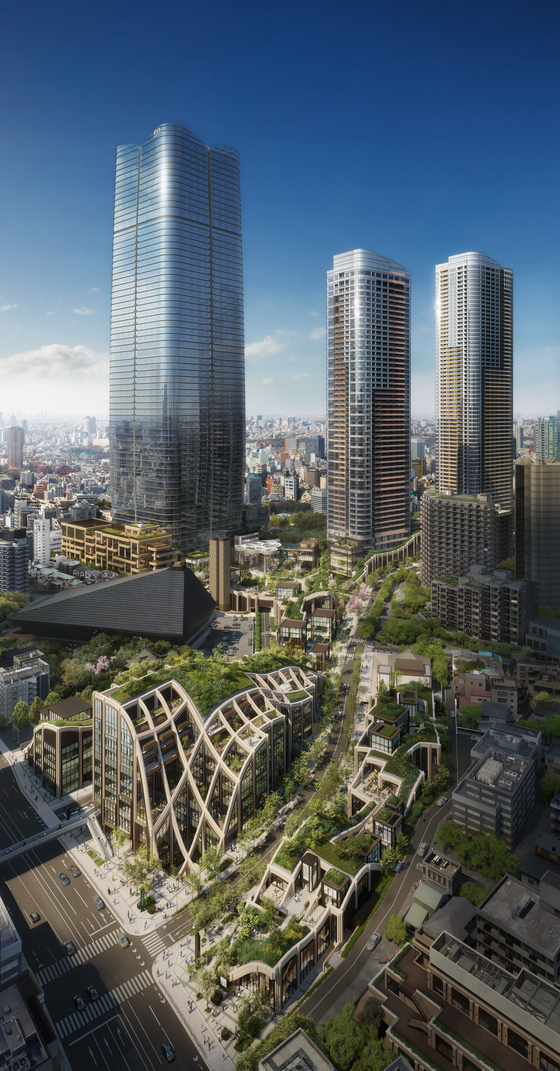A long way to go for Korean tourism

Kim Hyun-ki
The author is the Tokyo bureau chief and rotating correspondent of the JoongAng Ilbo.
Booking a table at popular restaurants in Ginza or other downtown districts in Tokyo is nearly impossible these days owing to the flood of foreign tourists. Many of the restaurants stopped receiving reservations and shifted to a first come, first served system. Only tourists can afford to wait around for an hour under the heat to check out the must-eat locations.
Hotels in my neighborhood are packed with people with different nationalities. Subways have become crowded and noisy, and litter piles up in roads that used to be squeaky clean. The sight is stupefying when compared to the past three years under the pandemic lockout.
Japan is hardly complaining. The number of foreign visitors in the first half reached 70 percent of the pre-pandemic level. Their spending has been greater than before. Thanks to the development, Japan’s annualized GDP increased 6.0 percent in the second quarter, twice bigger than expected. Last week, China also lifted the last group tour restrictions that includes Japan, the uncontested travel destination for the Chinese. The tourism boom is expected to continue for some time.
What attracts our attention is foreigners’ answers to why they chose Japan to visit. They say in one voice that there are lots of places to go to in Japan — a result of Japan’s persistent and rigorous efforts to add new entertainment locations.
The Azabudai Hills complex in Minato Ward, towering over the 81,000 square meter (20-acre) site and preparing to open in late November, is the newest landmark in Tokyo. Three skyscrapers, including 64-floor 330-meter (1,083-feet) Mori JP Tower, loom over the place which used to host shabby old shops and houses. The commercial building commanding a floor space of 23,140 square meters will host 150 luxury brands, including Hermes and Bulgari, and eateries from around the world. What makes the location exceptional is that it has bigger greenery space — 24,000 square meters — planted with 320 kinds of trees.
The space itself sports competitiveness, reviving the awe of the Roppongi Hills Mori Tower debuting as the first multi-purpose high-rise 20 years ago. Mori Building CEO Shingo Tsuji said that the compact-city environment is out to make Tokyo more competitive than London and New York. Although already a tourism powerhouse, Japan does not stop evolving. Apart from the Azabudai Hills, other parts of Tokyo — such as Shibuya and Shinjuku Wards — are undergoing massive urban developments to stimulate more tourism demand.
Rural areas are equally busy. Prefectures are turning out unique tourism programs and location-specific products. Traditional summer festivals in Kyoto, Aomori, and Tokushima were packed with foreign visitors willing to pay VIP seats costing 200,000 yen ($1,366). The return rate to Japan by foreigners averages at 64 percent, compared to Korea’s less than 40 percent.

Korea stumbled to salvage the 2023 World Scout Jamboree hosting 45,000 teenagers from the world. Companies, local governments, hotels, universities, and K-pop performers all had to chip in to make amends for the disastrous mess in Saemangeum, North Jeolla in early August. Local diners and citizens paid for the meals for the scouts in hopes that the young scouts can return home with better memories of Korea. Our pride has been stomped like the grass in the World Cup Stadium, which was chosen as the venue for the hastily-organized K-pop concert to appease the Jamboree members. The host of the event touted it for generating publicity effect of 6 trillion won ($4.5 billion). But it cost that much more shame for the country.
Those responsible for the fiasco are embroiled in a blame game instead of soul-searching. Former President Moon Jae-in — who was in office when the 2023 Jamboree was awarded to North Jeolla, home to the tidal flat in Saemangeum — said that the people must be ashamed of all the mess in the reclaimed land. In reaction, the Yoon Suk Yeol administration fumed over the carefree remarks from the former head of state. To the public, both sides look utterly irresponsible and insolent. Would the young scouts and their parents return to Korea under such circumstances?
Back in Tokyo, the Azabudai Hills targets 30 million foreign visitors annually. That’s the same number as Korea’s target for foreign tourists in 2027. One location can have a greater appeal than entire Korea. But let’s face it. If we could not handle 45,000 Jamboree visitors, how can we expect to attract and host hundreds times more foreign visitors? This is no time for the blame game, as there is too much work to do.










with the Korea JoongAng Daily
To write comments, please log in to one of the accounts.
Standards Board Policy (0/250자)